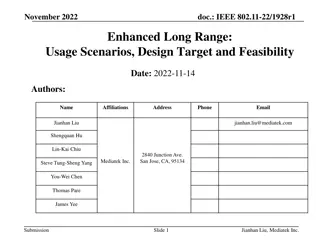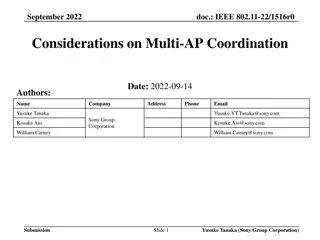Understanding the Evolution of Thin Clients
Explore the evolution and characteristics of thin clients, from their inception as interfaces for mainframe computers to modern ultra-thin clients with enhanced security and cost-effectiveness. Learn about the benefits, such as reduced energy consumption and improved manageability, as well as the tr
4 views • 35 slides
Overview of DSW End Point Assessment Team Leader Level 3
DSW End Point Assessment Team Leader Level 3 provides a clear understanding of the assessment process, ensuring individuals comprehend why and when it occurs, responsibilities involved, and how DSW supports them. It covers topics such as what End Point Assessment entails, assessment design and deliv
1 views • 18 slides
Educational Update on Student Engagement and Curriculum Implementation
Providing an update on student participation and engagement, the report mentions efforts made by the administration to reach out to non-participating students. It also discusses the use of technology tools like Google Classrooms to support teachers and ensure smooth virtual learning experiences. Tea
2 views • 17 slides
Open Source PMCI Stack Implementation for Add-In Card Manageability by Sumanth Bhat
Sumanth Bhat, a BMC Firmware Engineer at Intel, presented an initiative on open-source PMCI stack implementation for managing add-in cards. The agenda covered an overview of platform architecture with Add-In Card management, existing mechanisms, PMCI architecture overview, and external interfaces li
3 views • 18 slides
Importance of Hot-Plug and Error Handling for NVMe
Delve into the critical aspects of hot-plug and error handling for NVMe technology, focusing on challenges, solutions, customer requirements, and the significance of reliability, manageability, and serviceability. Learn how these elements impact device performance and mitigate failures at scale. Exp
6 views • 25 slides
Enhancing Quality of Service in Ultra High Rate Wi-Fi Networks
This document explores the potential improvements in Quality of Service (QoS) for Ultra High Rate (UHR) Wi-Fi networks, focusing on the benefits of timing information sharing for traffic urgency assessment. It discusses areas such as increased reliability, lower latencies, improved manageability, an
0 views • 11 slides
OpenStack Liberty Release Overview
Key themes of the OpenStack Liberty release include finer grained controls for operators, improved manageability and scalability, and support for virtual machines, containers, and bare metal. The release also focuses on common library adoption, better configuration management, and role-based access
0 views • 17 slides
Enhanced Long Range WiFi Solutions for IoT and Video Surveillance Applications
Outdoor IoT and certain indoor applications require enhanced long-range WiFi solutions for improved efficiency and compatibility. Features like relay using multi-AP can extend ranges but are not cost-effective. The booming home security camera market also necessitates enhanced long-range solutions t
0 views • 13 slides
Octavia Project Overview and Updates
Octavia is a network load balancing service in OpenStack that provides scalable, on-demand, and self-service access to load balancer services. The project has evolved to encompass all network load balancing and offers key features such as flexible network topologies, highly available load balancers,
0 views • 11 slides
Effective Data Transport Strategies for Large-Scale Operations
Explore strategies for efficient data transport in large-scale operations, emphasizing moving towards more extensive data types, ensuring security, transparency, and manageability. Detailing transport options like (S)FTP(s) and HTTP(s) while prioritizing simplicity and flexibility. Considerations fo
0 views • 32 slides
IEEE 802.11-22/1516r0 AP Coordination Considerations
Review of discussions on AP coordination in WNG sessions and EHT SG/TGbe meetings, proposing advancements for future WLAN technology. Emphasis on the importance of prioritizing AP coordination to address various WLAN objectives effectively. Details on AP coordination subtypes and their impact on rel
0 views • 11 slides
Understanding the Waterfall Model in Software Development
The Waterfall Model is a linear-sequential life cycle model for software development. In this model, each phase must be completed before the next can begin, without overlaps. The sequential phases include Requirement Gathering, System Design, Implementation, Integration and Testing, Deployment, and
0 views • 7 slides











